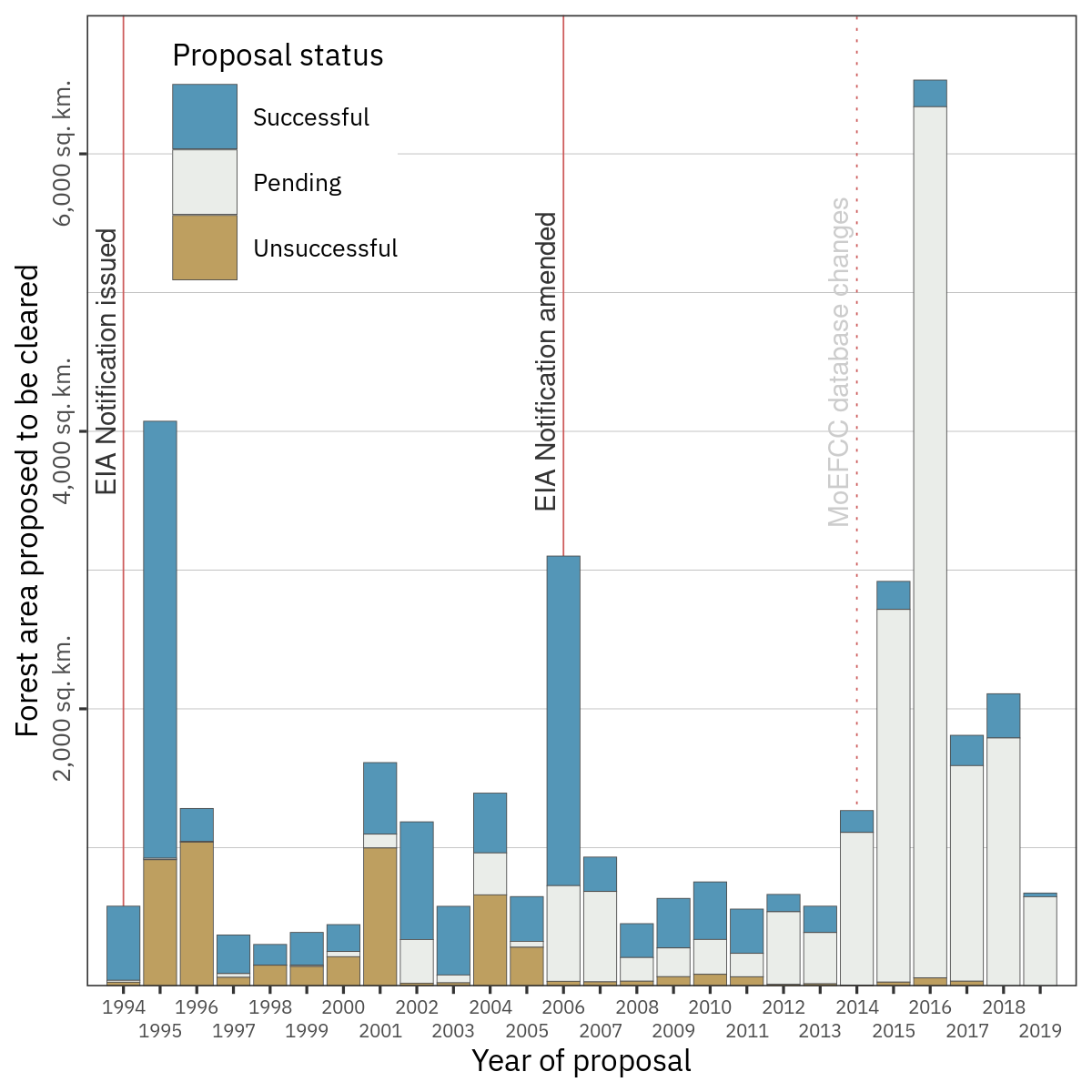India must strengthen its environmental governance regime
2020-08-03
Section 1 India must strengthen its environmental governance regime
Environmental Impact Assessments (EIA) are an imperative step to prevent loss of biological diversity, while taking into account the economic needs of a nation. In the midst of an ongoing pandemic, on 12th March 2020, days before a nationwide lockdown was imposed, the Government of India’s Ministry of Environment Forest and Climate Change (MoEFCC) published a revised draft Environmental Impact Assessment (EIA) Notification, titled Draft EIA 2020. Environmentalists nationwide have voiced significant concerns with respect to this draft, citing considerable dilution of existing EIA regulations.
The EIA Notification was initially issued in 1994, and further amended by ministerial notification in 2006. We accessed the MoEFCC forest clearance data between 1994 and 2019 to explore associations between notifications to the EIA and the forest area proposed/approved for clearance. This data was obtained from the PARIVESH portal for environmental clearance applications. Our analysis shows that projects applied for the clearance of a significantly larger proportion of forest area in years when or shortly after a new EIA notification was adopted. These years, 1995 and 2006, saw ~4,000 sq.km. and ~3,000 sq.km. proposed for clearance, which is nearly twice as much area proposed in other years. Further, the approval rate for projects did not differ significantly among years, and hence, 1995 and 2006 saw 814% more forest area approved for clearance than other years (see figure below).

Forest area (in sq. km.) proposed for clearance over the years 1994–2019, coloured to show the fraction approved (blue), rejected (brown), and pending decision (grey). Projects applied for nearly twice as much area to be cleared in years when or shortly after a new EIA notification was adopted (1995 and 2006).
Data on the PARIVESH portal has been organized by the MoEFCC as applications prior to 2014 and post 2014. By applying this distinction to our analysis, between 1994 and 2013, 70% of forest area proposed for clearances was approved. If this approval rate were applied to forest clearances pending since 2014, India could see an additional ~9,900 sq. km. of forest land cleared, about twice as much as in the preceding twenty years combined. Provisions in Draft EIA 2020 such as regularisation of environmental safeguards violations, or allowing projects to fence off forest land before the EIA process could cause further forest loss and degradation commensurate with those of 1995 and 2006. MoEFCC must withdraw Draft EIA 2020, and strengthen environmental governance if India is to meet national reforestation and international climate targets.
1.1 Affiliations
*Corresponding author. Email: vr2352@columbia.edu
1Department of Ecology, Evolution and Environmental Biology, Columbia University, New York, NY 10027.
2Groningen Institute for Evolutionary Life Sciences, University of Groningen, Groningen 9747 AG, The Netherlands.
3Ashoka Trust for Research in Ecology and the Environment, Jakkur Post, Bengaluru 560064, India.
*Corresponding author. Email: vr2352@columbia.edu
1.2 References
- MoEFCC. Draft Environmental Impact Assessment Notification. (2020).
- Gupte, P. R. Code for India forest clearance analyses. (Zenodo, 2020). doi:10.5281/ZENODO.3925792.
- MoEFCC. India’s intended nationally determined contribution. (2015).